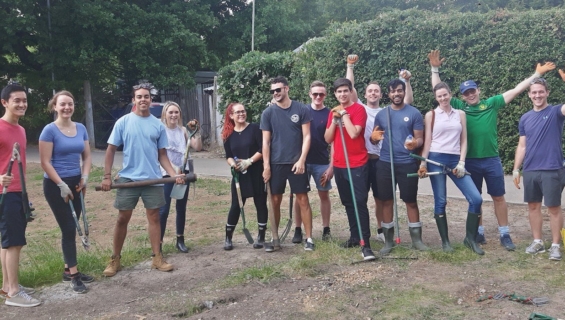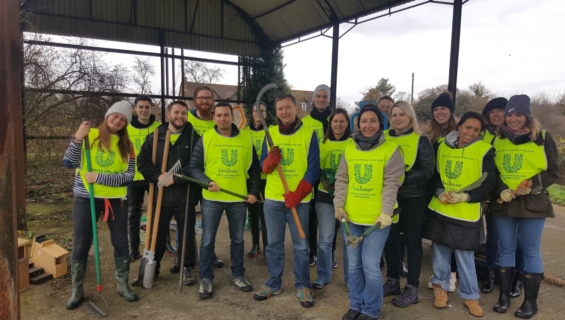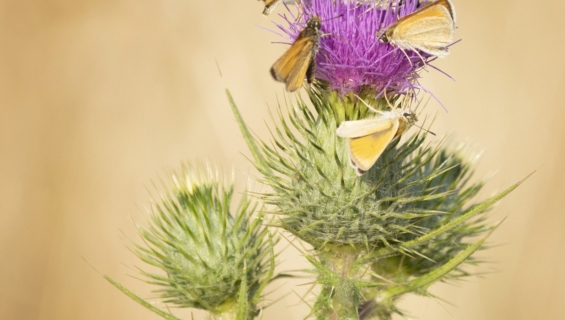Raeburn Open Space – Nature Conservation
Nestled in the heart of suburban London is a forgotten nature reserve called Raeburn Open Space. Known locally as Berrylands Nature Reserve, this five-hectare site in Kingston has the potential to be a haven for wildlife and a place for the local community to enjoy the natural world. The vision is to enable local people to transform this valuable green space into a thriving nature reserve to be used and treasured by the community for years to come.
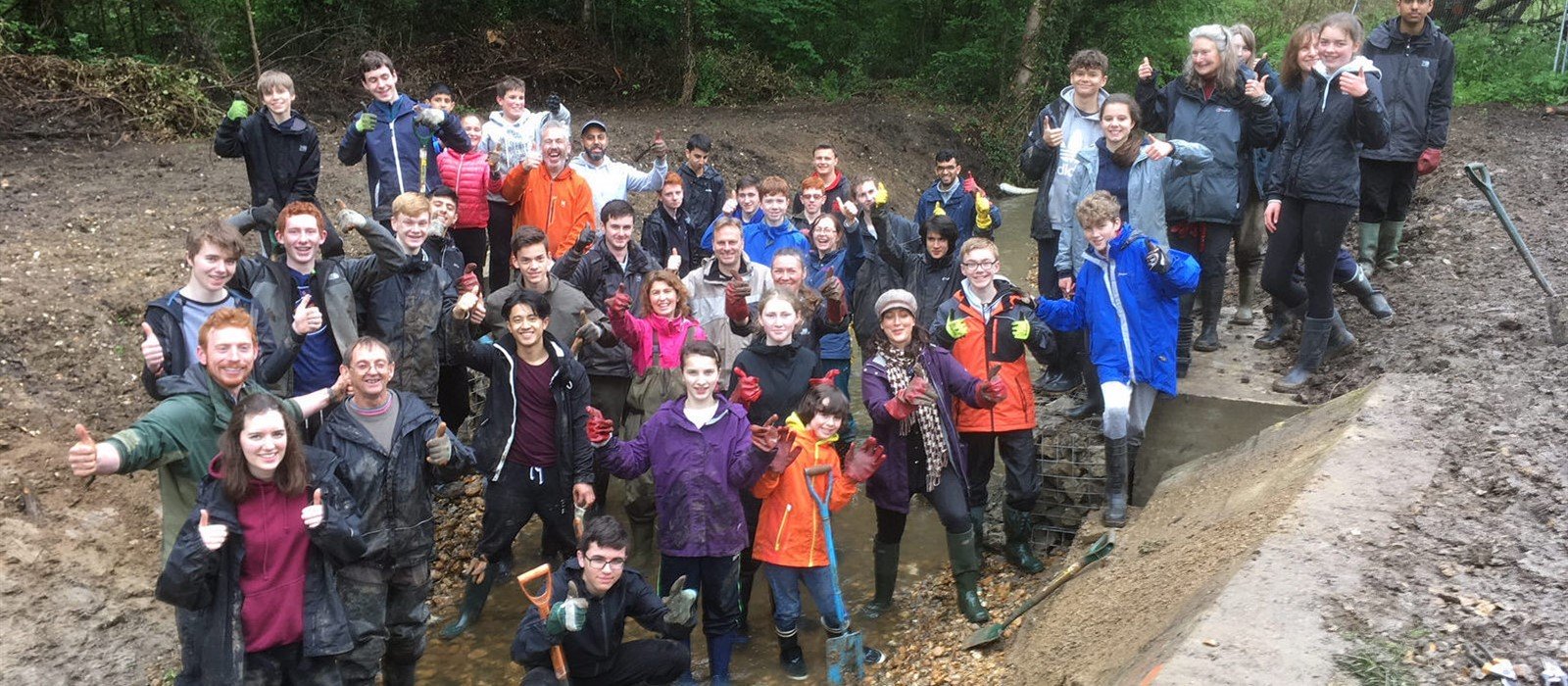
Thames Water provided funding for a three-year nature conservation project starting in 2017 that aimed to improve the site for wildlife and encourage local people to explore and connect with this green space and all it has to offer.
The site consists of a variety of habitat types, including native deciduous woodland, a stream known as Tolworth Brook (or Surbiton Stream) and some scrubland. The 1840 map depicts the area of Raeburn Open Space as farmed meadows divided up by hedgerows and the stream. Over the years, the stream has gradually been altered by concrete channelisation.
In 1992 the site was declared a nature reserve but in recent years it has suffered from neglect and anti-social behaviour, including burning of ancient trees, recreational drug use, rough sleeping and the accumulation of large quantities of litter. As a result, the area gained a negative reputation and was largely avoided by local residents. A lack of woodland management allowed areas of bramble monoculture to take over and an influx of invasive species to thrive, driving out many of the native species.
We are working with the local community to improve existing, and create new, habitats and thereby increase the diversity of flora and fauna. We are improving safe access to the site for the local community and encouraging learning about the local flora and fauna.
Our plan involved improving the habitat quality of the stream, creating new wetland habitat and enhancing the native woodland. We have created a nature trail to encourage the public to explore this hidden woodland and set up a vibrant friends group to take responsibility for the site and secure its protection far into the future.
If you are interested in volunteering at the Raeburn Open Space (also known as Berrylands Nature Reserve) yourself, or arranging a corporate volunteer day for your organisation, we would love to hear from you. Please contact us
What has been achieved so far?
Understanding the site
In order to make a sustainable plan for the future it was vital to have a clear understanding of the site in its current condition. With this in mind, we commissioned expert ecologists to survey the area and identify in detail the issues of invasive species and lack of management. Twelve different invasive species were found on the site, including large quantities of Himalayan balsam and variegated yellow archangel. The survey also brought to light some encouraging sightings within or close to the reserve of kingfisher, song thrush, hedgehog, slow worms, stag beetle and seven species of bat. There were also several specimens of pedunculated oak which are of importance because of their age; their girths indicate they are over 200 years old.
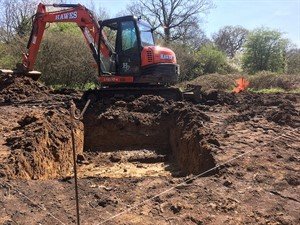
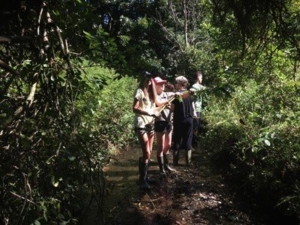
Creating wetland habitat
Although some of stream provided good habitat, there were problems limiting its benefit to wildlife that needed to be addressed. The weirs restricted fish passage up stream and the concrete banks meant a lack of marginal aquatic habitat. There was limited flow diversity that tends to reduce fish biodiversity.
Over 250 tonnes of concrete have been removed from the stream, improving the habitat and increasing the stream’s ability to store water, thereby reducing flood risk. Bankside reconstruction and in-stream restoration are complete and marginal aquatic plants are already establishing well. The works have improved fish passage along the stream and in stream and marginal habitats and there is a plan to build a kingfisher bank. A large new pond has been dug creating a valuable potential habitat for a whole host of species including dragonflies and amphibians. A number of odonatan species have already colonised the pond, including broad-bodied chasers and small red damselflies.
Encouraging Visitors
We regularly run events at Raeburn Open Space such as bat walks and dragonfly safaris, designed to inspire local people to explore the area and discover all it has to offer. Visitor numbers have already increased substantially since works began.
We have built a new bridge to make the site more accessible and laid paths to create a looped Nature Trail for people to explore the woodland. With Thames Water, we will create interpretation boards and more educational resources to enrich the educational experience.
Managing the Woodland
We are managing the woodland carefully to increase diversity by providing a variety of habitats and opportunities for foraging and movement for butterflies, birds, beetles, bats and badgers.
The woodland has suffered from lack of management, vandalism and neglect in recent years. The result has been an influx of invasive species and large amounts of litter negatively affecting the woodland ecology.
Our plan aims to create a diverse deciduous woodland with a broad age range of trees and areas of blackthorn coppicing. Woodland glades will allow light to reach the woodland floor, encouraging greater floral and invertebrate diversity and monolithic trees and nesting boxes will encourage roosting species.
Inspiring the local community and vision for the future
This project is a great example of the way we work with local volunteers, mobilising and inspiring them to create a sustainable local legacy. Our vision for Raeburn Open Space is for it to become a true community asset where urban wildlife thrives and local people can enjoy the natural heritage on their doorstep. Community engagement is vital to the long-term success of this nature conservation project and there has already been substantial community involvement with over 200 volunteers, local residents, scout groups, schools, corporate groups, churches and Duke of Edinburgh students. We are delighted that a friends group has already formed and have their own Berrylands Nature Reserve website. An enthusiastic friends group is vital to protect and care for this site into the future.
How you can get involved
Volunteer – We hold regular volunteer sessions where all are welcome.
Visit – Come and explore all the site has to offer.
Spread the word – Tell your friends about the site and encourage them to visit or volunteer.
Follow us on social media (see links below) to see the latest on events or sign up to receive our newsletter.
You may also be interested in:
Keep in touch!
Sign up for our monthly newsletter and be first to hear all the news, opportunities and events from the Habitats & Heritage community
